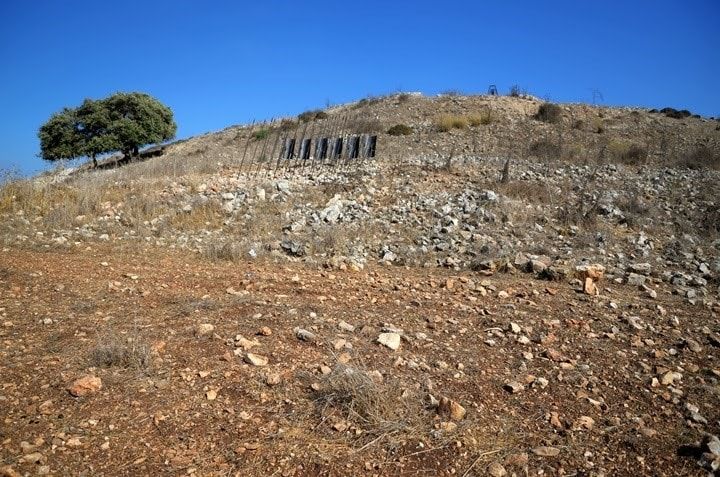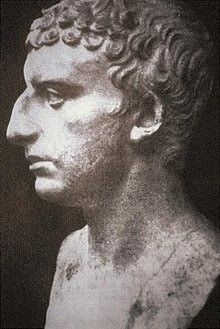In the autumn of 66 CE, Jews came together in the ancient city of Jerusalem and rebelled against the mighty Roman Empire.
Little did they know that they had initiated a chain of events that would lead to one of the greatest catastrophes to befall the Jewish people: the destruction of the Second Temple. The doomed rebellion also marked the beginning of a long period of exile that would go on to characterize Jewish life for almost 2000 years. Recently, this tragedy was commemorated on Tisha B’Av, often regarded as the saddest day in the Jewish calendar.
Related Reading: Tisha B’Av: Yes, Jews Were Here First
Despite the ultimate failure of the revolt against Imperial Rome, there are many awe-inspiring episodes from this pivotal moment in Jewish history. For example, there is the famous story of Masada, where a group of Jewish rebels resisted the Roman army, and then committed suicide rather than surrender.
However, not many people know about the siege of Yodfat, also known as Jotapata, where rebels held out on a hilltop town against a Roman force that numbered in the tens of thousands. If Masada was where the rebellion ended, Yodfat was where the rebellion began.
The Flag of Rebellion is Raised
The town of Yodfat is located in the northern Israeli region of the Galilee. In ancient times, it was part of the northern kingdom of Israel, and was conquered by the Assyrian Empire in the 8th century BCE. It was repopulated a few centuries later by non-Jews, and in the 2nd century BCE the area came under the control of the Hasmonean kingdom, a sovereign Jewish monarchy established after the rebellion against the Seleucid Empire. The Hasmoneans populated the area with Jews and further developed the territory. Notably, this was the only time in Jewish history that Jewish rulers forcibly converted people to Judaism.
By the 1st century CE, Yodfat had become a quiet and peaceful town of around 1000-1500 people. Yodfat had many artisans, shepherds, and even its own olive press, which meant this town had wealthy inhabitants, as olive oil was a highly valued commodity. It’s difficult to imagine that this quaint town would by 67 CE be filled with thousands of Jewish refugees from nearby areas who had fled from Roman forces.
The Jewish rebellion was led by a group known as the Zealots, who were primarily based in Jerusalem. However, other groups were also involved, such as the Sicarii, who had a massive following in the Galilee, the most radically anti-Roman region in Judea. As their name suggests, the Zealots were extremely traditionalist Jews who resisted all Roman and Hellenistic influence in Judea. The Sicarii were especially violent, and were infamous for committing murder in broad daylight to publicly intimidate the Romans and their local supporters.
Related Reading: 10 Questions About the Dead Sea Scrolls Answered
These rebels had many grievances against the Empire, which included excessive taxation by Roman governors and favoritism of non-Jews in Judea over Jews, as well as other offenses.
In 39 CE, Emperor Caligula declared himself a deity and ordered that a statue of his likeness be built in every temple in the Empire, including the Jerusalem Temple. The Jews were alone in their refusal, and would not budge. Caligula was on the verge of massacring the Jews because of their defiance when he suddenly passed away. While their insubordination went unpunished, this event turned Jewish sentiment against the Romans. After all, there was nothing stopping the Romans from desecrating the Temple whenever the Empire wanted to.
The Jews were proven right, and the Romans eventually did begin to defile the Temple. Roman soldiers exposed themselves and even burned a Torah scroll inside the Jewish people’s holiest site. However, the final straw came when Governor Gessius Florus looted vast sums of silver from the Temple in 66 CE. This enraged the Jews to the point that they destroyed the Roman garrison in Jerusalem, and routed an army of soldiers that had arrived from neighboring Syria to put down the rebellion.
This victory, combined with mass Jewish disgust at the Roman Empire, encouraged thousands of Jews to take up arms all over Judea.
The Rebels’ Last Stand
Once the rebellion was underway, the leaders in Jerusalem selected a young man to be the military governor of the vital Galilee region. He was from a prominent and noble Judean family, beloved by the people, and also had an elite Roman education, which meant that he had an intimate knowledge of the enemy. His name was Joseph ben Matityahu. Once Joseph was made governor, he immediately got to work building up fortifications in many towns across the the Galilee region, including at Yodfat.
Meanwhile, the Romans swiftly responded to the Jewish revolt. They dispatched Vespasian and his son Titus, two legendary commanders who would go on to become Emperors, to lead 60,000 professional and heavily armed legionaries against the rebels.
The Roman soldiers swept through the towns of the Galilee, and by 67 CE thousands of refugees had fled to Yodfat to make their last stand. As it was on top of a hill that overlooked a valley, and only penetrable from one steep side Yodfat was in an excellent strategic location for the purposes of rebellion.

What had once been a quaint little town was now a crowded war zone, filled with rebels, refugees, their wives and children. The Jews knew they were on a suicide mission: Their view from Yodfat enabled them to see the masses of Roman legionaries who had gathered to quell the rebellion. Yet the Jews did not concede.
While Vespasian thought that he could force the Jews to surrender by simply waiting for their water supply to run out, Joseph had planned ahead. The leader of the rebellion had built cisterns that allowed residents to collect and drink rainwater. This remarkable forethought served to demoralize the Romans, who eventually realized that the Jews would be able to hold out for much longer than Vespasian had anticipated.
Related Reading: What’s in a Name? The Origins of Judea, Philistia, Palestine and Israel
Vespasian countered Joseph by constructing a siege ramp to climb over the walls the Jewish defenders had built. Joseph responded by ordering his men to build up their defenses, and pour boiling oil and boiled fenugreek down the walls. These tactics slowed down the Roman assault. At one point, Vespasian even used a battering ram, but was unable to breach the walls.
However, the tide soon turned against the Jews. A deserter who had escaped from Yodfat informed the Romans about the exhausted and weakened state of the Jewish defenders. The Romans quickly acted on this new information and finally traversed the wall – quietly killing the watchmen – and snuck into the town at night. The rebels were caught off guard but fought back valiantly – to no avail. Jewish men were slaughtered and thrown into mass graves, while the women and children were enslaved. Yodfat was ultimately overrun on the first day of the Hebrew month of Tammuz in 67 CE.
Joseph and 40 of his best soldiers were hiding out in a nearby cave when the Romans overran Yodfat. The men knew the Romans would eventually find them, so they decided to commit suicide en masse. But since self-immolation is against Jewish law, they instead opted to draw straws and fight among themselves to the death. The rebels with the shortest straws would fight each other first, with the process continuing until the two men with the longest straws would kill one another. But Joseph took steps to ensure that he would have the longest straw. When all of his men had killed each other, he convinced the last remaining man to put down his sword and surrender to the Romans. Vespasian accepted their surrender, and Joseph was ultimately enslaved by the Romans.
Yodfat was razed to the ground by the Romans, and left barren ever since. It is estimated that tens of thousands of men, women and children across the Galilee were enslaved by the Romans in the aftermath of the Yodfat rebellion.
Despite being outnumbered by a much more professional force, the rebels resisted Vespasian and his army for 47 days. This is an astounding feat when one considers that Yodfat was not originally built to be a fortress like Masada, and in fact was mostly populated by refugees during the siege.
Evidence of the Yodfat Rebellion
The story of Yodfat is compelling, but is there evidence to confirm its veracity? To that end, it is worth noting that Joseph most assuredly did not fade from history after he was enslaved. Rather, he was a highly educated historian and scholar who proved to be extremely useful to the Romans. He rose through the ranks and became a client of the Flavius family. Joseph would go on to be widely known as Josephus Flavius. Though he never converted and remained a self-proclaimed proud Jew until his death, Josephus Flavius believed that the Jewish way of life could be reconciled with Hellenism.

As the official chronicler of the Flavius family, Josephus authored many extensive tomes, most notably The Wars of the Jews that told the story of the Jewish revolt, including the siege of Yodfat. He also wrote The Antiquities of the Jews, which describes the complete history of the Jewish people. These books introduced the story of the Jews to a wide Roman audience. Quite remarkably, these writings are still in print. While the works of Josephus are biased in favor of the Romans, they are still a valuable source of information about this critical time in Jewish history.
Along with Josephus, the Romans also documented their conquest of Yodfat. Moreover, there are extensive archaeological findings in the ancient town that confirm much of what Josephus wrote. And since the town was never resettled after it was destroyed, the archaeological findings have remained intact and plentiful. Over the past few decades, hundreds of pottery shards and stones have been excavated in Yodfat that date back to ancient times. In addition, the cisterns Josephus built were uncovered, along with multiple mikvahs, stone houses, an olive oil press, a large mural, and a mass grave of the rebels killed during the siege.
Related Reading: Jewish Ties to the Temple Mount – What’s the Story?
Aftermath of the Rebellion
After Yodfat was razed, the once troublesome Galilee province was finally pacified. The Romans continued their conquest of Judea, and eventually laid siege to Jerusalem. Once they got into the city, Titus destroyed the Temple and defeated the rebels, while enslaving thousands of other Jews.
When Titus became Emperor, a victory arch was constructed in Rome to commemorate his and his father Vespasian’s victory over the rebels in Judea. It was meant to celebrate Rome’s domination of Judea, Titus’ strength and divinity, and the superiority of Roman culture.
The Arch still stands today, but the Roman Empire is long gone. While the Romans left an indelible mark on Europe, the Mediterranean, and the Middle East, their polytheistic religion, culture, institutions, and empire no longer remain, while the Jewish people still do.
Liked this article? Follow HonestReporting on Twitter, Facebook, Instagram and TikTok to see even more posts and videos debunking news bias and smears, as well as other content explaining what’s really going on in Israel and the region.


